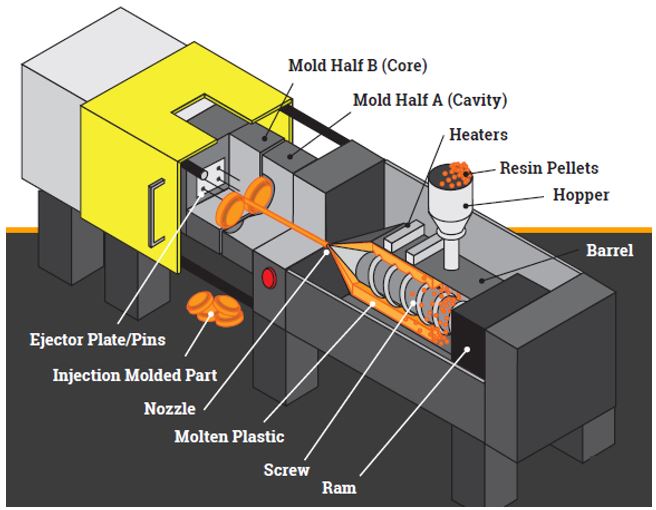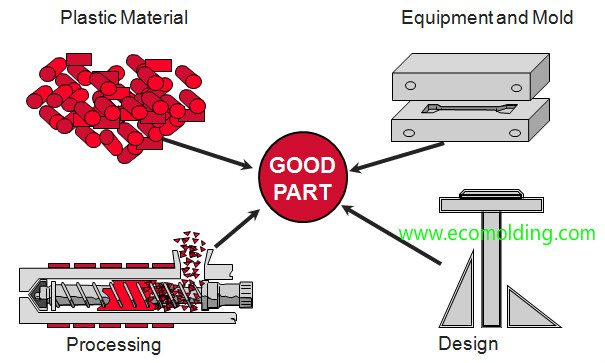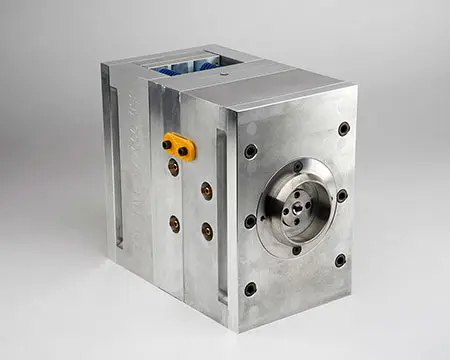Exactly How Plastic Injection Molding Drives Performance in Automation
Exactly How Plastic Injection Molding Drives Performance in Automation
Blog Article
Understanding the Fundamentals of Plastic Shot Molding Procedures
Plastic shot molding serves as a cornerstone of contemporary manufacturing, providing a methodical strategy to creating complicated elements with accuracy. Exploring these vital aspects might disclose exactly how even minor adjustments can lead to substantial renovations in production end results, elevating concerns about the capacity for development in this recognized procedure.
What Is Plastic Injection Molding?
Plastic injection molding is a widely used production process that transforms thermosetting and thermoplastic products right into precise and intricate forms. This strategy is preferred for its capacity to produce high quantities of similar parts with phenomenal precision, making it an essential method in different markets, consisting of auto, durable goods, and medical devices.
The process involves melting the chosen plastic product and injecting it right into a mold and mildew under high stress. The mold, made to the specs of the preferred component, permits the liquified plastic to materialize as it cools and solidifies. As soon as the material has solidified, the mold and mildew is opened, and the completed component is ejected.
Plastic shot molding provides several advantages, consisting of lowered waste, consistency in manufacturing, and the ability to integrate elaborate designs that might be challenging with other making techniques. Furthermore, it supports a broad series of materials, each offering unique properties that can be customized for details applications. As sectors continue to introduce, plastic shot molding stays at the center, making it possible for the development of innovative products that fulfill advancing consumer needs.
The Shot Molding Process
The shot molding process is an innovative technique that involves numerous essential phases to create top quality plastic parts. Plastic pellets are fed right into a heated barrel where they are melted into a viscous fluid. This molten plastic is then injected under high pressure into a precision-engineered mold and mildew, which forms the material right into the preferred type.
When the mold and mildew is filled, the plastic is enabled to solidify and cool, taking the form of the mold and mildew cavity. Cooling time is important, as it impacts the cycle time and the last residential properties of the molded part. After sufficient air conditioning, the mold opens, and the finished element is expelled using ejector pins.

Products Made Use Of in Injection Molding
Numerous materials can be utilized in the injection molding procedure, each offering special buildings that provide to certain applications. The most commonly used materials consist of thermoplastics, thermosetting plastics, and elastomers.

Thermosetting plastics, like epoxy and phenolic resins, undertake a chemical adjustment throughout the healing procedure, resulting in a stiff, stringent structure. These materials are ideal for applications calling for high heat resistance and architectural integrity, typically used in auto components and electric insulators.
Elastomers, including silicone and rubber-based products, supply versatility and resilience. Their special buildings make them ideal for applications that demand flexibility, such as gaskets and seals.
In addition, specialized materials like bio-based plastics and composites are obtaining grip for their ecological benefits and improved efficiency features, widening the range of injection molding applications in different markets. Recognizing the homes of these materials is vital for selecting the ideal type for particular tasks.
Advantages of Shot Molding
Injection molding attracts attention as a highly reliable production process that provides many benefits for generating complicated get rid of precision. Among the most substantial advantages is the capability to develop elaborate layouts that would be tough or impossible to accomplish with other techniques (Plastic Injection Molding). The procedure permits for tight resistances and thorough attributes, making certain top quality components
Furthermore, shot molding is known for its quick production capacities, making it a perfect option for high-volume manufacturing. When the mold and mildew is developed, parts can be created quickly, decreasing preparations and enhancing overall efficiency. This performance not only decreases production expenses however also offers an one-upmanship in the market.
The convenience of materials made use of in injection molding better enhances its appeal. A variety of thermoplastics and thermosetting polymers can be utilized, allowing manufacturers to pick materials that ideal satisfy their particular requirements, consisting of flexibility, warm, and strength resistance.
Furthermore, the procedure minimizes waste, as excess material can commonly be reused and reused. This sustainability element adds to a lowered environmental effect, making shot molding a liable production choice. In general, the benefits of shot molding make it a recommended approach for many markets.
Aspects Influencing Item High Quality
While countless factors can influence product quality in injection molding, comprehending these aspects is critical for attaining optimum outcomes. Trick facets consist of product option, refining criteria, and mold design.
Material selection plays an important role, as different polymers exhibit unique buildings that influence check it out flowability, toughness, and thermal security. Insufficient material choice can lead to problems such as bending or insufficient dental filling.
Processing specifications, including pressure, temperature level, and cycle time, should be meticulously managed. Variants in these setups can lead to incongruities partially measurements and surface coating. Excessively high temperatures might cause destruction of the polymer, while insufficient pressure can result in brief shots.
Mold design is just as crucial, as it identifies the flow of the molten plastic and the cooling procedure. Badly designed mold and mildews may bring about uneven air conditioning prices, resulting in recurring stresses and dimensional errors.

Final Thought
In final thought, plastic injection molding serves as a vital production process that allows the efficient production of top quality components. Proficiency of the shot molding procedure, consisting of the understanding of materials and the read this article impact of numerous aspects on item high quality, is vital for accomplishing optimal outcomes. The benefits of this technique, such as cost-effectiveness and design adaptability, more highlight its importance across numerous markets, solidifying its standing as a favored choice for high-volume manufacturing.
Plastic shot molding offers as a cornerstone of modern production, offering a methodical strategy to creating complex parts with precision.Plastic shot molding provides several benefits, including lowered waste, consistency in manufacturing, and the ability to incorporate detailed styles that might be challenging with other manufacturing approaches (Plastic Injection Molding). As industries proceed to innovate, plastic shot molding stays at the leading edge, enabling the growth of innovative items that satisfy evolving consumer demands
The shot molding process is an advanced technique that includes numerous essential phases to produce high-grade plastic elements.In verdict, plastic injection molding serves as a critical manufacturing procedure that enables the effective manufacturing of top quality elements.
Report this page